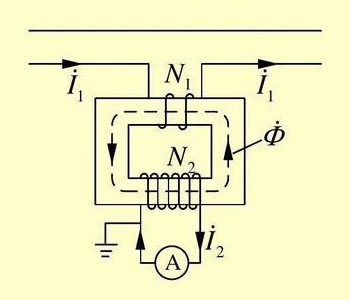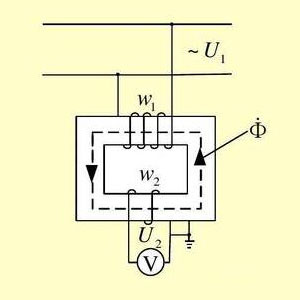Difference Between Current Transformer and Potential Transformer
The instrument transformers like current transformer and potential transformer (also called voltage transformer) are both used for measuring devices, which have a similar working principle to transformers. The current transformer can reduce the high current to low current, while the potential transformer steps down the high voltage to low voltage for measuring the circuit or in the power distribution. They both separate the measurement circuit from the high-voltage grid to protect safety of the personnel.
Current transformer
Functions of current transformer
- To convert a large primary current into the small 1A/5A current.
- To provide the current for the coil of measuring device and protective relaying.
- To separate primary voltage from secondary voltage.
Working principle and measuring precision of current transformer
- Working principle
As shown in the schematic diagram of current transformer, the primary winding consists of one turn or several turns of wires with a large cross section, and the circuit whose current is to be measured is introduced. The secondary side has a large number of turns, which can change the large current in the circuit into a small current for measurement. - Measuring precision
According to the value of error, the current transformer can be divided into five grades, including 0.2, 0.5, 1.0, 3.0 and 10, respectively. Take the precision grade of 0.5 for example. It means that the primary and secondary current ratio error should not exceed 0.5%.
Characteristics of current transformer
- The primary winding is installed in series in the current. Meanwhile, the number of turns is small, so the current in primary winding is fully decided by the load current of circuit-under-test but irrelevant to the value of secondary current.
- The resistance of the current coil of the instrument with which the secondary winding of the current transformer is connected is small. Under the normal condition, the current transformer operates under a state close to the short circuit.
Precautions for use
- For the sake of safety, the secondary side of the current transformer must ensure reliable ground connection to prevent the primary-side high voltage to the secondary side after insulation breakage, thus causing human injuries.
- The primary side is installed in series in the circuit. The relay or measuring device of the secondary side is installed in series.
- Attention should be paid to polarity during wiring. The polarity terminal block of the primary side and secondary side of the current inductor is all marked by alphabetic letter.
- The secondary side of the current inductor absolutely bans the open circuit.

Potential transformer (voltage transformer)
Functions of voltage transformer
- To convert the high voltage proportionally into the standard secondary voltage of 100V or a lower grade for the use of protective and measuring devices or instruments.
- To isolate the high voltage from electricians using the potential transformer.
Working principle and measuring precision of current transformer
- Working principle
In the potential transformer schematic diagram, the primary side is directly connected to the high-voltage circuit which is measured. Different turns ratio of the primary and secondary side can be measured by turning the high voltage on the circuit into the low voltage. - Measuring precision
The potential transformer for the use of the electric system can be divided into three precision grades, including 0.5, 1.0 and 3.0, respectively. The potential transformer is characterized by certain rated capacity. It is improperly to connect too many instruments while using the secondary side to prevent the current from being too large to cause a significant leakage reactance drop, thus impairing the potential transformer’s precision.
Precautions for use
- For the sake of safety, the secondary side of the potential transformer must ensure reliable ground connect to prevent channeling of high voltage to cause personal injury or equipment breakdown.
- Attention should be paid to the polarity of the primary-side and secondary-side terminal block so as to ensure measurement accuracy.
- The primary side should be installed in parallel in the circuit, and the primary side and secondary side of the potential transformer should be installed with the fuse for short-circuit protection.
- The secondary side of the potential transformer does not allow the short circuit. Otherwise, a large short circuit will be generated (installation of the fuse is necessary to provide short-circuit protection).
Conclusion: differences between potential transformer and current transformer
- The secondary side of the current transformer allows short circuit but no open circuit. The secondary side of the potential transformer allows open circuit but no short circuit.
- Compared with the load of the secondary side, the resistance within the primary side of the potential transformer can be ignored, so the potential transformer can be regarded as a voltage source. On the contrary, the primary side of the current transformer features a large internal resistance, thus equaling the current transformer to a current source with infinitely large internal resistance.
- The magnetic flux densit is close to the saturation value when the voltage transformer is working normally; when the voltage transformer breaks down, the magnetic flux density drops. When the current transformer is working normally, the magnetic flux density is very flow. However, when short circuit happens to the current transformer, the primary-side short-circuit current rises to cause a significant increase of the magnetic flux density, which is sometimes even far higher than the saturation value.

